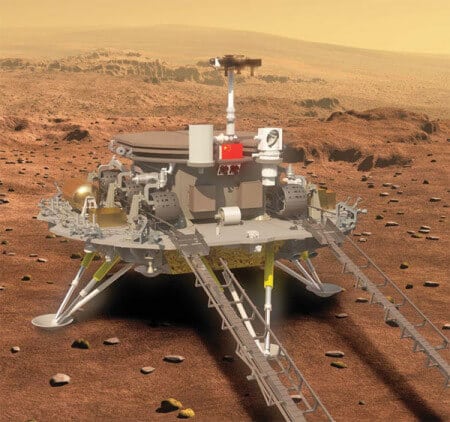The Hushing spacecraft will include a compass with high-resolution observation capabilities of the surface, as well as a lander with an all-terrain vehicle inside

In July of this year (2020), the Chinese will launch an unmanned spacecraft to Mars named Huoxing. The launch will be done using the Long March-5 Y4 launcher. It will be a double spaceship that will include a capsule and a lander. The spacecraft will be put into orbit around Mars and then release a lander that will descend to the surface of the planet. This lander is actually a rover. This will be the first launch of its kind by the Chinese.
A total of 13 research instruments in the dashcam and the SUV. The lander has two cameras, one with a high resolution equivalent to that of the American reconnaissance Mars Orbiter, a radar for underground measurements, a spectrometer for mineralogical measurements, neutral and energetic particle analyzers and a magnetometer. For comparison, in the high resolution camera of the American compass, the resolution is 25 cm per pixel.
The weight of the SUV is 240 kg, medium weight and the scientific equipment includes a ground penetrating radar, a multi-spectral camera, a Laser Induced Breakdown Spectroscopy device and instruments for measuring weather and a magnetometer. An arm for collecting soil samples and a small laboratory for testing the samples are not included. Probably due to weight and budget limitations.
Possible landing sites Chryse Planitia close to the Viking 1 and Pathfinder landing sites and the other in Isidis Plantia in the Elysium Mons area between the Viking 2 and Curiosity landing sites. These locations indicate an intention for comparative geological studies.
The SUV has three landing pads, each of which has 3 legs and is low. From the vehicle comes out a very long descent ram that serves as a contact ram for the vehicle's wheels. This is to allow the car to descend at a low angle and thus avoid descending at a high angle. The number of wheels is 6, 3 on each side and the photo shows that each of them can be rotated separately. Each of the two landing gear has a pair of handrails on each side to prevent the vehicle from sliding for any reason while descending to the ground. The energy source is solar collectors.
The launch itself, like the launches to the moon, will not be directly to Mars. In the first stage, the spacecraft will be put into orbit around the Earth in an elliptical orbit with a high eccentricity. When in every rotation the spacecraft will reach the high eccentricity point, the spacecraft's engines are activated and raise it, thus gradually reaching a height where the effect of the Earth's impact force is low enough to allow the spacecraft to overcome it and then fly to Mars.
Sources
1. "China to launch Mars probe in July” 24.1. 2020
2. 'China's first Mars spacecraft undergoing integration for 2020 launch"29.5.2019

2 תגובות
If they discover life, they will eat it.
Are they taking some tiny and not cute virus with them?